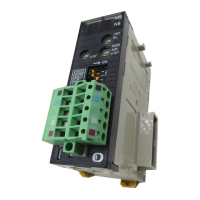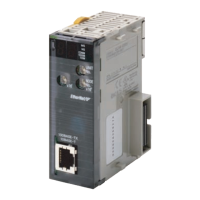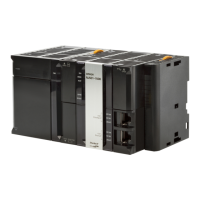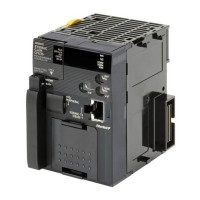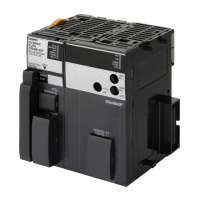4
CJ-series Features Section 1-2
Up to 3 Expansion Racks
and 40 Units
By connecting an I/O Control Unit to the CPU Rack and I/O Interface Units to
Expansion Racks, up to three Expansion Racks (but only one for CJ1M CPU
Units) can be connected. The CPU Rack can contain up to 10 Units, as can
each of the three Expansion Racks, enabling a total of up to 40 Units.
Two I/O Allocation
Methods
The need for Backplanes was eliminated, enabling the following two methods
for allocating I/O.
1. Automatic I/O Allocation at Startup
I/O is allocated to the connected Units each time the power is turned ON
(same as CQM1H PLCs).
2. User-set I/O Allocation
If desired, the user can set I/O tables in the same way as for the CS-series
PLCs.
The default setting is for automatic I/O allocation at startup, but the user can
set the PLC to automatically use I/O tables to enable checking for Unit con-
nection errors or to allocate unused words.
Allocate Unused Words The CX-Programmer can be used to allocate unused words in I/O tables for
transfer to the CPU Unit. This enables keeping words unallocated for future
use or to enable system standardization/modularization.
Structured Programming
Division of the Program
into Tasks
When the program is divided into tasks that handle separate functions, control
systems, or processes, several programmers can develop these separate
tasks simultaneously.
There can be up to 32 regular (cyclically executed) tasks and 256 interrupt
tasks. There are two types of interrupts: Power OFF Interrupts and Scheduled
Interrupts.
When a new program is being created, standard programs can be combined
as tasks to create an entire program.
Earlier program
Task
Task
Task
Task
Standard programs
Program ABC
Program ABD
Task 1 (A)
Task 2 (B)
Task 3 (C)
Task 1 (A)
Task 2 (B)
Task 3 (D)

